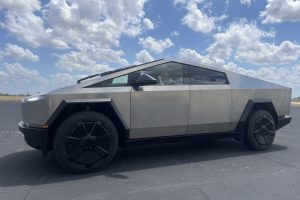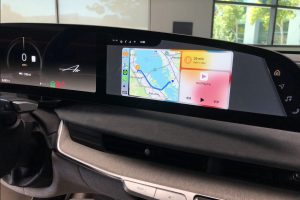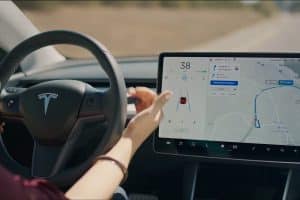- 🗣️ Elon Musk explained the reasoning behind disbanding Tesla’s Supercharger team on his social media platform X.
- ⚡ Tesla plans to grow the Supercharger network at a slower pace and focus more on ensuring 100% uptime and expanding existing locations.
- 🚗 Several automakers, including Rivian and Ford, have gained access to the Supercharger network, and more are set to follow.
- ⁉️ The decision to disband the Supercharger team and slow down the network’s expansion is seen as peculiar by some, given the increasing number of EVs that will rely on it.
- 📍 Some states and rural areas have limited Supercharger coverage, potentially causing inconvenience for drivers who can’t charge at home.
- 💬 The article invites readers to share their comments, concerns, or questions about this move.
As the electric vehicle (EV) revolution continues to gain momentum, the availability and reliability of charging infrastructure have become critical factors in ensuring a smooth transition to sustainable transportation. Tesla, the pioneering EV manufacturer, has been at the forefront of this revolution, not only with its cutting-edge vehicles but also with its vast Supercharger network.
However, a recent announcement by Elon Musk, Tesla’s CEO, has sent ripples through the EV community. Musk explained the reasoning behind disbanding Tesla’s Supercharger team on his social media platform X, citing plans to slow down the pace of new location openings and prioritize the uptime and expansion of existing Supercharger stations.
The Supercharger Strategy: Balancing Growth and Reliability
Tesla’s Supercharger network has long been a key selling point for the company’s vehicles, providing EV owners with a convenient and reliable charging solution during long-distance travel. However, as the number of EVs on the road continues to grow, the demand for charging infrastructure has skyrocketed, putting immense pressure on the Supercharger network.
Musk’s decision to shift focus from rapid expansion to improving the reliability and capacity of existing Supercharger locations aligns with Tesla’s commitment to providing a seamless charging experience for its customers. By prioritizing uptime and expanding existing locations, the company aims to ensure that current Supercharger stations can handle the increasing demand without compromising on reliability or convenience.
Addressing the Concerns
While Musk’s strategy may seem counterintuitive in the face of surging EV adoption, it addresses some valid concerns raised by customers and industry experts alike. Over the past few years, reports of overcrowded Supercharger stations, lengthy wait times, and occasional outages have surfaced, highlighting the need for a more robust and resilient charging infrastructure.
By focusing on existing locations, Tesla can optimize the layout, increase the number of chargers, and implement measures to enhance the overall charging experience. Additionally, ensuring 100% uptime at these stations will minimize frustrations and inconveniences for EV owners, ultimately contributing to a more positive perception of the Supercharger network.
The Open Charging Ecosystem
Another factor that likely influenced Musk’s decision is the growing trend of opening up the Supercharger network to other automakers. Several major players, including Rivian and Ford, have already gained access to Tesla’s charging infrastructure, with more expected to follow suit in the near future.
This move towards an open charging ecosystem is a positive development for the EV industry as a whole, fostering collaboration and ensuring a more seamless charging experience for drivers regardless of their vehicle brand. However, it also means that the Supercharger network will need to accommodate a larger number of EVs, potentially exacerbating the existing challenges of overcrowding and high demand.
By temporarily slowing down the pace of new location openings and focusing on optimizing existing sites, Tesla can better prepare for the influx of non-Tesla EVs and ensure a consistent charging experience for all users.
Addressing the Geographical Disparities
One of the concerns raised by some EV enthusiasts and industry experts is the geographical disparity in Supercharger coverage. While urban and suburban areas are relatively well-served, several states and rural regions have limited access to Supercharger stations, potentially causing inconvenience for drivers who cannot charge at home.
Musk’s strategy of expanding existing locations could help alleviate this issue by strategically targeting underserved areas and ensuring that current Supercharger sites are capable of handling increased demand. By optimizing the layout and increasing the number of chargers at these locations, Tesla can effectively bridge the charging gap in these regions, making long-distance travel more feasible for EV owners.
The Road Ahead: Balancing Growth and Reliability
While Musk’s decision to disband the Supercharger team and slow down the network’s expansion may seem counterintuitive at first glance, it represents a strategic move to address the growing pains of the EV charging infrastructure. By prioritizing reliability and optimizing existing locations, Tesla aims to provide a seamless charging experience for its customers while preparing for the influx of non-Tesla EVs accessing the Supercharger network.
However, it’s important to note that this strategy should not be seen as a long-term solution. As the demand for EVs continues to soar, Tesla will eventually need to resume aggressive expansion of its Supercharger network, while maintaining the high standards of reliability and convenience that it has become known for.
The success of this strategy will ultimately depend on Tesla’s ability to strike the right balance between meeting the current demand and preparing for future growth. By effectively managing the challenges of overcrowding, geographical disparities, and reliability, Tesla can solidify its position as a leader in the EV charging infrastructure market and pave the way for a more sustainable and convenient future for electric mobility.





